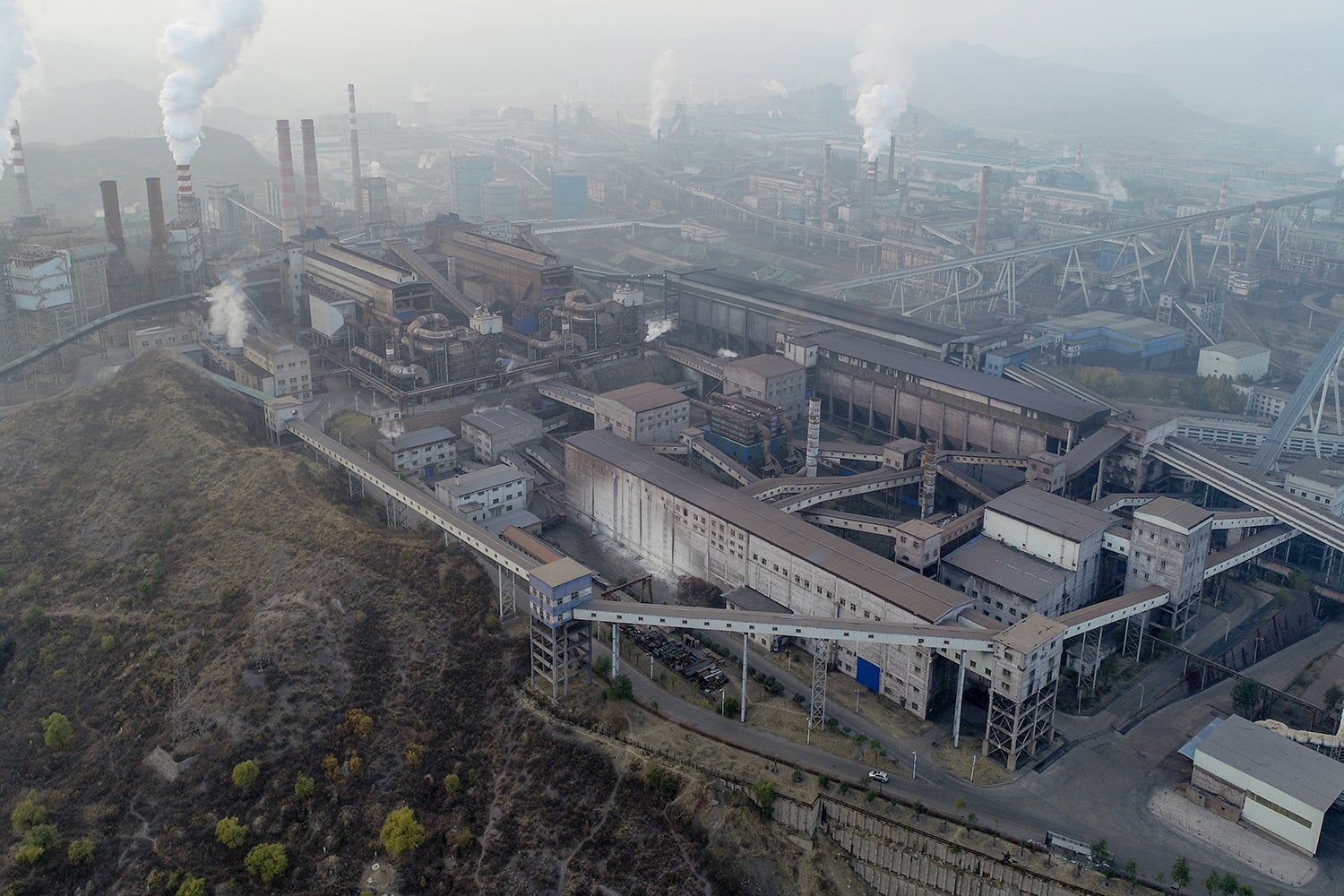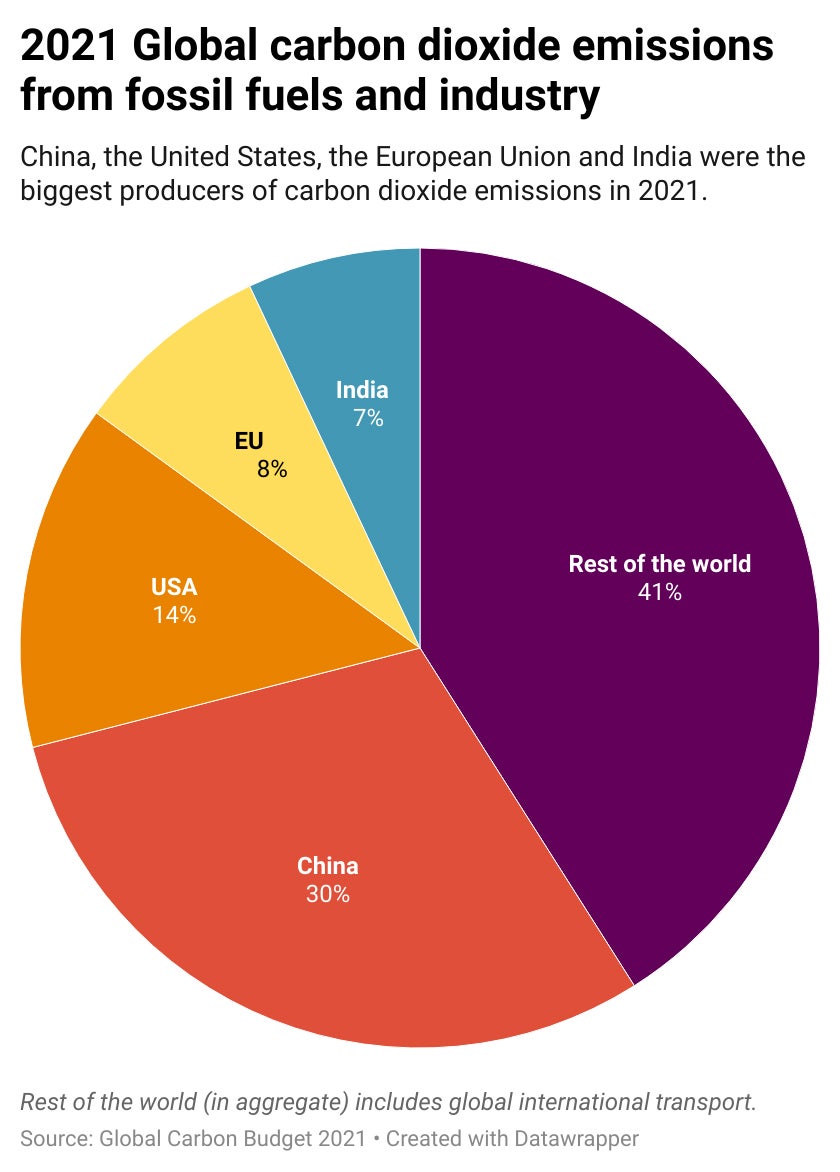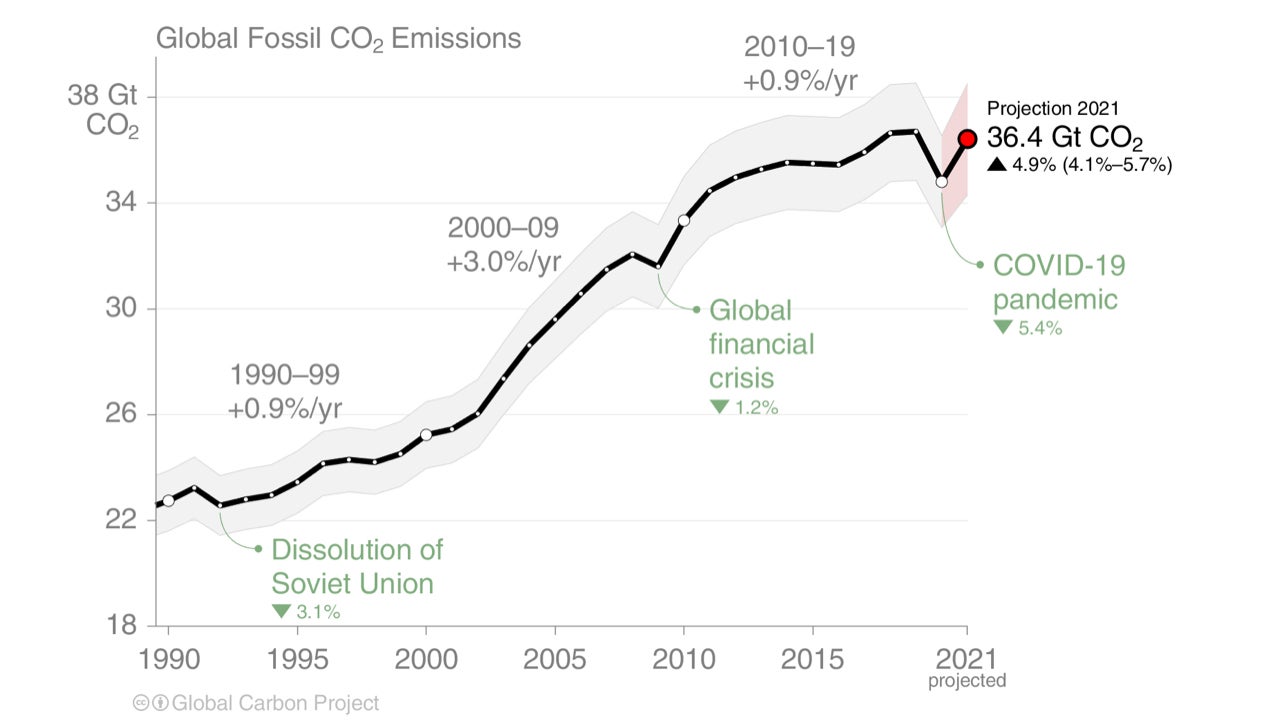Industrial emissions of carbon dioxide have returned close to pre-pandemic levels, according to new research published Nov. 4. Surging consumption of coal and natural gas for power plants and industry is driving the rebound – especially in China – even as transportation emissions remain down and renewable energy use ramps up.

Aerial view of a coal-fired factory in Chengde, China, in 2018. Industrial emissions of carbon dioxide have returned close to pre-pandemic levels, according to new research. Surging consumption of coal and natural gas for power plants and industry is driving the rebound, especially in China. (Image credit: Shutterstock)
This year’s jump back to nearly 36.4 billion tons of CO2 – a 4.9 percent increase over 2020 – is similar to the emissions rebound that followed the 2008 global financial crisis.
“We expected this rebound when the world’s economy returned close to normal. Park your car for a year and it’s the same polluting vehicle when you start it again. Similarly, when economic activity returns, so do emissions,” said Rob Jackson, a professor of Earth system science at Stanford University and chair of the Global Carbon Project, an academic consortium that produces the annual emission estimates.
The latest figures were reported in Earth System Science Data Discussions and on the preprint server arXiv.org, and have been submitted to Environmental Research Letters, where they are undergoing peer review. The estimates arrive in the midst of a major climate summit known as COP26 in Glasgow, Scotland, where countries that signed the 2015 Paris Climate Agreement are discussing efforts to achieve the accord’s goal of keeping global warming well below 2 degrees Celsius above pre-industrial levels, and preferably below 1.5 degrees Celsius.
Closing in on dangerous thresholds
A vast body of research points to 1.5 and 2 degrees Celsius as destructive thresholds beyond which climate impacts such as intense droughts, extreme heatwaves, coastal floods, crop failures and extinctions are likely to become more severe and widespread. Already, the world has warmed by 1.2 degrees Celsius since pre-industrial times, with effects ranging from longer wildfire seasons in California to more torrential rains and flash flooding in Europe, to harsher droughts in Southern Africa.

China, the United States, the European Union and India were the biggest producers of carbon dioxide emissions in 2021. (Click image to enlarge.) (Image credit: Global Carbon Project 2021)
Without deep emission cuts worldwide, the new projections show the 2-degree mark could be crossed within a few decades and 1.5 degrees within a decade at current emission rates. “It’s challenging because so much of our infrastructure lasts longer than a decade – all of our power plants, even most vehicles,” said Jackson, who is also a senior fellow at the Stanford Woods Institute for the Environment and the Precourt Institute for Energy.
The United States – the largest producer of greenhouse gases in the past century and one of the world’s biggest polluters in terms of both annual and per capita CO2 emissions – has pledged to cut net carbon emissions to half of 2005 levels before the end of this decade, and reach net-zero emissions before 2050. On Nov. 1, the White House released a long-term strategy to reach that goal, in part through a major budget bill – not yet approved by Congress – that would unlock some $555 billion in climate spending.
Jackson and colleagues estimate U.S. emissions from fossil fuels will increase 8 percent to reach 5.1 billion tons in 2021 – close to pre-pandemic levels – despite emissions remaining down in power, ground transport and aviation. “Heavy industry, on the other hand, is already back up and running and has passed its 2019 emission levels,” said Sam Abernethy, a co-author of the paper submitted to Environmental Research Letters and a PhD student in applied physics who works in Jackson’s lab at Stanford’s School of Earth, Energy & Environmental Sciences (Stanford Earth).
Fossil fuels on the rise
Carbon dioxide emissions from burning fossil fuels like gas and coal are on track to rise in every country and region in the world this year compared to 2020, when the economic disruptions of COVID-19 led to an unprecedented 1.9-billion-ton (5.4 percent) decline in CO2 emissions. “We thought global coal use had peaked in 2014, but we’re perilously close to that value again this year,” said Jackson, the Michelle and Kevin Douglas Provostial Professor at Stanford.

Global fossil carbon dioxide emissions from 1990 to 2021. (Click image to enlarge.) (Image credit: Global Carbon Project)
Yet the rebound from last year’s plunge is playing out differently around the world.
India’s carbon emissions are projected to reach 2.7 billion tons, up 3 percent from 2019 and 12.6 percent from 2020. As in the U.S., emissions in Europe are tracking slightly below 2019 levels, at 2.8 billion tons. The rest of the world in aggregate, which includes global international transport, is projected to produce 14.7 billion tons of CO2 this year – down slightly from 2019 because of pandemic-related reductions in shipping and aviation.
China, the world’s largest emitter for the past 15 years, was unusual in having increased emissions even during the throes of the pandemic. The nation’s carbon pollution is expected to reach 11.1 billion tons this year, up 6 percent from 2019 and 4 percent from 2020 – driven in part by COVID-19 recovery incentives that have boosted industrial production relying heavily on coal.
Investing in decarbonization
Overall, the new figures “reflect a return to the pre-COVID fossil-based economy,” said Pierre Friedlingstein, lead author of the Earth System Science Data Discussions paper and chair of mathematical modeling of climate systems at the University of Exeter in the UK. As part of their COVID recovery efforts, some nations have supported solar installations, vehicle electrification, energy-saving home retrofits, wind power and more. Others have attached green conditions to government aid. Those plans, however, are “insufficient, so far, on their own” to sustain the reduced emission levels seen in 2020 and necessary to keep warming below 1.5 degrees Celsius, Friedlingstein said.
“We will have lost a critical opportunity if we spend trillions of dollars to stimulate the world’s economies and don’t support clean industries,” Jackson said. “The window is still open to pass much-needed climate-related funding here in the United States.”
Co-authors on the Environmental Research Letters paper are affiliated with Ecole Normale Supérieure; University of East Anglia; CICERO Center for International Climate Research; CSIRO Oceans and Atmosphere; Laboratory of the Sciences for the Climate and the Environment at CEA-CNRS-UVSQ; University of California, Irvine; and Tsinghua University.
The research was supported by the Gordon and Betty Moore Foundation; the Australian National Environmental Science Programme’s Climate Systems Hub; the European Commission Horizon 2020 projects VERIFY and CoCO2; Future Earth; and the Royal Society.
To read all stories about Stanford science, subscribe to the biweekly Stanford Science Digest.
Media Contacts
Josie Garthwaite, School of Earth, Energy & Environmental Sciences: (650) 297-0947, josieg@stanford.edu
Rob Jackson, School of Earth, Energy & Environmental Sciences: (650) 497-5841, rob.jackson@stanford.edu
Sam Abernethy, School of Humanities and Sciences: (650) 382-9943, sabernet@stanford.edu